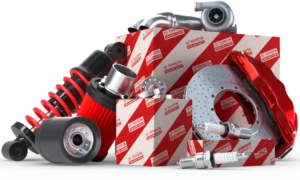Cremation is a common choice for many families. This process turns the body into ashes, which is a less traditional but often more affordable and environmentally friendly option as compared to burial.
In this article, we will walk you through the entire cremation process. From the preparation of the body to the final return of the ashes, you’ll understand each step involved.
What Is Cremation?
Cremation is the process of reducing a body to ashes through intense heat. The body is placed in a cremation chamber, where it is exposed to temperatures reaching over 1,600°F. This process turns the body into bone fragments, which are later processed into fine ashes.
Cremation has been practiced in different forms for thousands of years, with evidence of its use dating back to the Stone Age. It gained popularity as a choice for handling remains due to its affordability, simplicity, and environmental benefits. Cremation offers an alternative to traditional burial.
Why Do People Choose Cremation?
There are several reasons why people opt for cremation instead of traditional burial.
- Environmental Benefits – Cremation is often seen as a greener alternative to burial. Traditional burials require the use of land, caskets, and embalming fluids, which can be harmful to the environment. While cremation uses less space and doesn’t involve these chemicals.
- Financial Considerations – Cremation is typically more affordable than a traditional burial. It eliminates the need for expensive caskets, burial plots, and headstones. Families can also choose simpler, cost-effective options for urns or memorial services.
- Cultural or Religious Factors – Some cultures and religions prefer cremation over burial. For instance, Hinduism and Buddhism have long practiced cremation, viewing it as a way to release the soul. Additionally, many people choose cremation for its flexibility, as it allows for memorial services to take place after the cremation has occurred.
- Practical Reasons – For some, cremation is chosen due to the lack of available burial space or because the deceased had expressed a preference for cremation. It also allows for easier transportation of the remains if the deceased is being relocated or memorialized in another location.
Step-by-Step Process of a Cremation Service
Here are the steps of what happens in a cremation service:
Step 1: Preparation of the Body
When the body is received at the crematorium, it undergoes initial preparations. In most cases, embalming is not required for cremation, but it may be done if there is a viewing or if the body is being transported. The body is carefully handled and placed in a simple, dignified garment.
Before cremation, all medical devices, such as pacemakers or prosthetics, are removed because they can cause dangerous explosions in the cremation chamber. Jewelry and personal items are also removed unless specified by the family.
Step 2: Identification and Authorization of the Procedure
Identification is a critical step before the cremation process begins. The deceased’s identity is confirmed through a series of checks, often involving the family. Legal paperwork, including authorization from the family, is required to proceed with the cremation. The family is typically asked to sign a consent form, affirming that they approve the cremation and any additional requests they may have, such as how the ashes will be handled.
Step 3: Choosing the Cremation Container
The body must be placed in a cremation container, which can vary in type and cost. Traditional caskets, while available, are not always necessary. Alternative containers, such as cardboard, are often used for direct cremation. These are simpler and less costly.
Some families opt for eco-friendly containers made from biodegradable materials. These containers are ideal for those looking to minimize environmental impact. The choice of container does not significantly affect the cremation process itself but can influence the final cost and the family’s wishes for a green burial or cremation.
Step 4: Placing the Body in the Cremation Chamber
Once prepared and placed in the container, the body is then moved to the cremation chamber. Cremation chambers are large, industrial-sized ovens that can reach temperatures ranging from 1,400°F to 1,800°F (760°C to 982°C). These high temperatures reduce the body to bone fragments within a few hours.
Before the body is placed in the chamber, it is carefully positioned to ensure that the process proceeds efficiently. The chamber’s heat is carefully controlled to ensure the entire body is cremated, leaving only bone fragments behind.
Step 5: Cremation and Finalizing the Remains
The actual cremation process takes anywhere from 1.5 to 3 hours, depending on the size and weight of the body. As the body is exposed to intense heat, the organic materials are vaporized, leaving behind bone fragments.
After the cremation, the remains are processed. The bone fragments are removed from the chamber and allowed to cool. They are then placed in a machine called a cremulator, which grinds the bones into fine ashes. These ashes are often referred to as “cremains.
Step 6: Transferring the Ashes to the Family
Once the ashes are processed, they are carefully transferred into a container or urn chosen by the family. The urn may be simple or ornate, depending on the family’s preferences. Families are then given the option of keeping the ashes in an urn, scattering them in a meaningful location, or burying them in a cemetery.
Some families may choose to split the ashes among several urns or have a portion of the ashes incorporated into jewelry or other memorial items.
What Happens After the Cremation?
After the cremation, the family is given the remains in the form of ashes. Some families may choose to scatter the ashes in a place of significance, such as a park, body of water, or private property. Others may decide to bury the ashes in a memorial plot or keep them in a decorative urn in their home.
Another option gaining popularity is the creation of memorial keepsakes. Ashes can be incorporated into jewelry, art pieces, or even made into diamonds. These keepsakes allow families to have a physical reminder of their loved one.
How Long Does the Cremation Process Take?
The cremation process itself typically lasts between 1.5 to 3 hours. However, the overall time from receiving the body to returning the ashes can vary depending on several factors.
Typical Duration of a Cremation Service
The cremation process begins when the body is placed in the cremation chamber. The body is exposed to intense heat (over 1,600°F) for a period of time that varies depending on the size and weight of the individual. Afterward, the remains are cooled and processed, which can take additional time. In total, families can expect the entire cremation service, from start to finish, to take 2 to 4 days. This allows time for paperwork, preparation, and processing the ashes.
Factors Affecting the Length of the Process
Several factors can affect how long the cremation process takes, including:
- Size of the Body: Larger bodies take longer to cremate due to the need for higher temperatures and more time to reduce the body to ash.
- Cremation Container: A thicker or more substantial cremation container may take longer to burn, influencing the overall duration.
- Cremation Chamber: Some cremation chambers may be more efficient, reducing the time required for cremation. Newer chambers may also have better temperature control, which can affect the time.
What Is a Cremation Chamber?
A cremation chamber, also known as a crematory furnace or retort, is the critical component used in the cremation process. It is a specially designed furnace that reduces the body to ash by exposing it to extremely high heat.
Function and Structure
The cremation chamber is designed to withstand high temperatures, often reaching 1,600°F to 1,800°F (870°C to 982°C). Inside the chamber, the body is placed in a container, and intense heat breaks down the body’s organic material into gases and bone fragments. After the cremation, the remains are processed into a fine ash, which is what families typically receive.
Temperature, Safety, and Efficiency
Cremation chambers are built with safety features to ensure the cremation process is conducted properly. The chamber must be able to safely handle the extreme heat without posing a risk to the surrounding environment. Modern cremation chambers are designed to be energy-efficient and meet environmental standards, reducing emissions and using fuel in an efficient manner.
The temperature in the chamber is carefully monitored and controlled to ensure that the body is properly cremated. Typically, the body’s organic matter is completely vaporized in the first few hours, leaving behind only bone fragments. The temperature is also essential for ensuring the body is completely cremated without any remnants that could cause contamination.
FAQs
Q: What Type of Container Is Used for Cremation?
A: Cremation typically requires the body to be placed in a container, but it doesn’t necessarily need to be a traditional casket. Simple containers like cardboard boxes, biodegradable materials, or more formal wooden caskets can be used. The choice depends on the family’s preferences and any legal requirements.
Q: Can a Body Be Cremated Without a Coffin?
A: Yes, a body can be cremated without a traditional coffin. Most crematories allow the body to be placed in a simple container, such as a cardboard box or a biodegradable casket. These are often used for direct cremation, which is a simpler, no-frills option.
Q: What Happens to the Body During Cremation?
A: During cremation, the body is exposed to extreme heat that reduces it to gases and bone fragments. The soft tissue is vaporized, and the remaining bones are then processed into fine ashes. This process usually takes several hours to complete.
Q: Can Cremated Remains Be Kept in Multiple Urns?
A: Yes, families can choose to divide the cremated remains into multiple urns if desired. This allows different family members to keep a portion of the ashes as a remembrance. Some families also opt for memorial jewelry, art pieces, or other keepsakes containing a portion of the ashes.
Q: Is the Cremation Chamber Cleaned After Each Use?
A: Yes, cremation chambers are thoroughly cleaned after each use. This ensures that any remains from the previous cremation are properly removed and that the chamber is ready for the next procedure. The process includes cleaning the chamber and inspecting it for safety and efficiency before it is used again.
Q: How Do I Know My Loved One’s Ashes Are Returned?
A: Cremation providers take great care to ensure that the ashes returned are those of your loved one. To ensure this, some crematories follow a strict identification system that links the deceased to their ashes throughout the process. Many facilities will offer documentation, a tracking system, or a certificate of cremation to confirm that the ashes returned are indeed from the individual who was cremated.



































